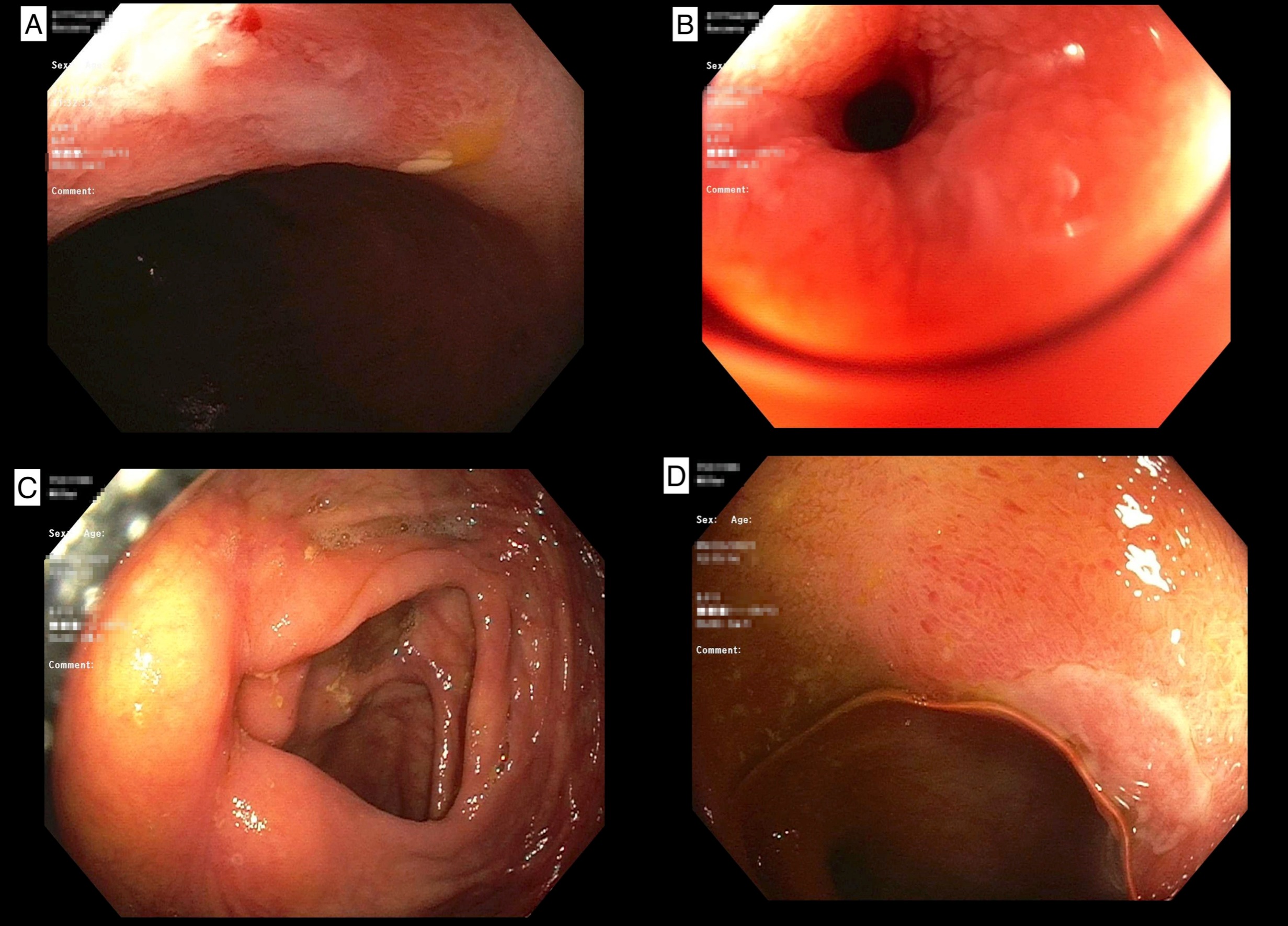Back
Poster Session E - Tuesday Afternoon
E0426 - How to Manage Silent Inflammatory Bowel Disease
Tuesday, October 25, 2022
3:00 PM – 5:00 PM ET
Location: Crown Ballroom

Andrew Krane, MD
Warren Alpert Medical School of Brown University
Providence, RI
Presenting Author(s)
Andrew Krane, MD1, Sean Fine, MD, MS2
1Warren Alpert Medical School of Brown University, Providence, RI; 2Brown University, Providence, RI
Introduction: The incidence and prevalence of inflammatory bowel diseases (IBD), Ulcerative Colitis (UC) and Crohn’s Disease (CD), are increasing worldwide. The pathogenesis of IBD is multifactorial and the disease has a pre-clinical stage where inflammation and damage progress to develop intestinal symptoms. However, some patients in the pre-clinical stage of IBD may be identified on screening modalities. This finding often poses a dilemma as asymptomatic patients may not be willing to initiate medical treatment. Here we describe two cases of pre-clinical IBD found on screening colonoscopy.
Case Description/Methods: Patient 1 is an asymptomatic 47-year-old female without significant past medical history who presented for screening colonoscopy. Colonoscopy revealed ileocecal valve stenosis with inflammation that prevented intubation beyond the valve but tissue sample of the ileum was obtained (Figure 1, A-B). Biopsies revealed focal active ileitis with mild glandular distortion and rare pseudopyloric glandular distortion. Magnetic resonance elastography (MRE) showed findings of the terminal ileum with marked bowel wall thickening, luminal narrowing, upstream dilatation suggestive of stricture and penetrating disease with enteroenteric and enterocolonic fistulas. Patient was classified A3/L3/B3.
Patient 2 is an asymptomatic 51-year-old female with a past medical history of gastroesophageal reflux disease and anxiety who presented for screening colonoscopy. Colonoscopy was noted to have a patchy, erythematous and ulcerated ileum, and distorted IC valve (Figure 1, C-D). Biopsies revealed severe active ileitis with ulceration. Patient subsequently underwent further workup revealing positive anti-Saccharomyces cerevisiae antibodies (ASCA). Patient was classified as A3/L1/B1.
Discussion: Identifying pre-clinical IBD on screening modalities should not dissuade a clinician from appropriately managing moderate to severe cases of IBD. It may be difficult to decide who to treat because such patients are asymptomatic, but persistent inflammation has been shown to be associated with higher rates of hospitalization, surgery, or new abscesses or fistulas. Clinicians can follow up with lower risk patients to monitor symptoms like patient 2, but asymptomatic fistulizing disease and stenoses are high risk like seen in patient 1. Awareness of pre-clinical IBD is important and further discussions about screening and management are warranted.

Disclosures:
Andrew Krane, MD1, Sean Fine, MD, MS2. E0426 - How to Manage Silent Inflammatory Bowel Disease, ACG 2022 Annual Scientific Meeting Abstracts. Charlotte, NC: American College of Gastroenterology.
1Warren Alpert Medical School of Brown University, Providence, RI; 2Brown University, Providence, RI
Introduction: The incidence and prevalence of inflammatory bowel diseases (IBD), Ulcerative Colitis (UC) and Crohn’s Disease (CD), are increasing worldwide. The pathogenesis of IBD is multifactorial and the disease has a pre-clinical stage where inflammation and damage progress to develop intestinal symptoms. However, some patients in the pre-clinical stage of IBD may be identified on screening modalities. This finding often poses a dilemma as asymptomatic patients may not be willing to initiate medical treatment. Here we describe two cases of pre-clinical IBD found on screening colonoscopy.
Case Description/Methods: Patient 1 is an asymptomatic 47-year-old female without significant past medical history who presented for screening colonoscopy. Colonoscopy revealed ileocecal valve stenosis with inflammation that prevented intubation beyond the valve but tissue sample of the ileum was obtained (Figure 1, A-B). Biopsies revealed focal active ileitis with mild glandular distortion and rare pseudopyloric glandular distortion. Magnetic resonance elastography (MRE) showed findings of the terminal ileum with marked bowel wall thickening, luminal narrowing, upstream dilatation suggestive of stricture and penetrating disease with enteroenteric and enterocolonic fistulas. Patient was classified A3/L3/B3.
Patient 2 is an asymptomatic 51-year-old female with a past medical history of gastroesophageal reflux disease and anxiety who presented for screening colonoscopy. Colonoscopy was noted to have a patchy, erythematous and ulcerated ileum, and distorted IC valve (Figure 1, C-D). Biopsies revealed severe active ileitis with ulceration. Patient subsequently underwent further workup revealing positive anti-Saccharomyces cerevisiae antibodies (ASCA). Patient was classified as A3/L1/B1.
Discussion: Identifying pre-clinical IBD on screening modalities should not dissuade a clinician from appropriately managing moderate to severe cases of IBD. It may be difficult to decide who to treat because such patients are asymptomatic, but persistent inflammation has been shown to be associated with higher rates of hospitalization, surgery, or new abscesses or fistulas. Clinicians can follow up with lower risk patients to monitor symptoms like patient 2, but asymptomatic fistulizing disease and stenoses are high risk like seen in patient 1. Awareness of pre-clinical IBD is important and further discussions about screening and management are warranted.

Figure: Figure 1: Screening Colonoscopy of Patients
A – Patient 1 Ileocecal valve
B – Patient 1 Stenosed Ileocecal valve unable to be traversed
C – Patient 2 Normal appearing ileocecal valve
D – Patient 2 Terminal ileum ulcer
A – Patient 1 Ileocecal valve
B – Patient 1 Stenosed Ileocecal valve unable to be traversed
C – Patient 2 Normal appearing ileocecal valve
D – Patient 2 Terminal ileum ulcer
Disclosures:
Andrew Krane indicated no relevant financial relationships.
Sean Fine: Bristol Meyers Squibb – Consultant.
Andrew Krane, MD1, Sean Fine, MD, MS2. E0426 - How to Manage Silent Inflammatory Bowel Disease, ACG 2022 Annual Scientific Meeting Abstracts. Charlotte, NC: American College of Gastroenterology.
